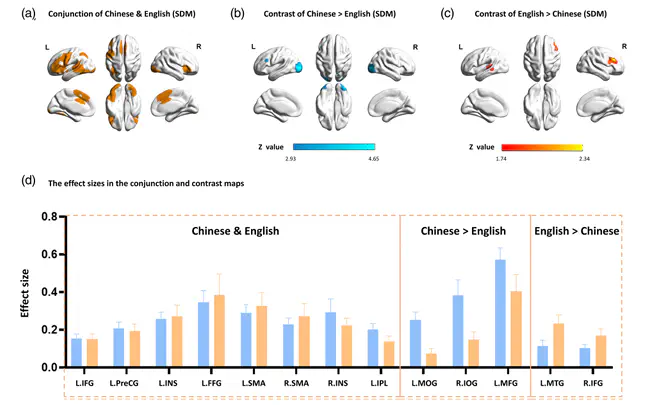Universality and language specificity of brain reading networks A developmental perspective.

摘要
The development of reading networks across different languages and cultures provides an important window to address gene-culture interactions in brain functionality development. Previous meta-analyses have explored the neural correlates of reading in different languages with diverse orthographic transparencies. However, it remains unknown whether the neural topographic relationship of different languages varies when taking development into account. To address this issue, we conducted meta-analyses of neuroimaging studies with approaches of activation likelihood estimation and seed-based effect size mapping and focused on two highly contrasting languages, Chinese and English. The meta-analyses covered 61 studies of Chinese reading and 64 studies of English reading by native speakers. The brain reading networks of child and adult readers were further separately analyzed and compared to explore the developmental effects. The results revealed that the commonalities and differences in reading networks for Chinese and English were inconsistent between children and adults. In addition, the reading networks converged with development, and the effects of writing systems on brain function organizations were more salient in the initial stages of reading. An interesting finding was that the left inferior parietal lobule demonstrated increased effect sizes in adults compared with children in both Chinese and English reading, indicating a common developmental feature of reading mechanisms across the two languages. These findings provide new insights into the functional evolution and cultural modulation of brain reading networks.